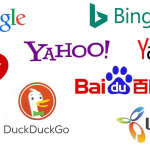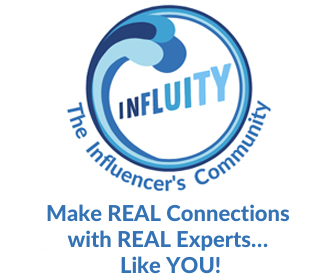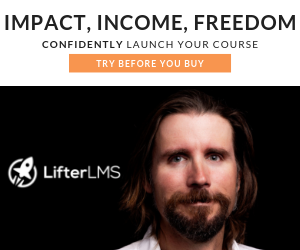1. What inspired you to write this book?
About ten years ago I met up with an old friend
from graduate school days who told me … “Shooting the shit with a bunch
of engineers, we realised that none of us knew anything at all about quantum
physics, so we decided to start a study group to sort it out. I drew the
topic of the defiance of Bell’s inequality by quantum probabilities. It
is a fairly interesting problem, and you should look into it. I have
reviewed the literature, and I’ll send you my notes.” Completely
naive at the time about quantum theory myself, I did. It took me some ten years
of study in all, and disrupted my life.
2. What exactly is it about and who is it
written for?
On the face of it, the book concerns the
mechanics of particles of light and electric energy with respect to polarising
material and magnetic detectors. In the larger scheme of theoretical physics,
it concerns a challenging argument of Einstein that quantum theory is
incomplete in specifying probabilistic behaviour of the smallest particles of
matter. John Bell had tried to revitalise this viewpoint from its mainstream
dismissal, but was puzzled by the apparent defiance of standard rules of
probability by quantum theoretic specifications, if Einstein were right.
Bell suspected that something was wrong with his famous result, and I have
found out what it is! … along with further egregious errors of quantum
theorists deriving from shoddy mathematics.
3. What do you hope readers will get out
of reading your book?
The generally educated reader, interested by the
foundations of science, should learn specifically that the mysterious claims of
quantum theorists, widely propagated on educational videos such as You
Tube as well as in leading academic journals, are based on mathematical
error. On a grander scale, that widely acclaimed propositions of
scientific authorities can be mistaken. Scientific theory must be
recognised as disputable, and the disputation must be recognised and
addressed. Of course the leading lights of the profession will try to
protect themselves and their constructs from attack by benign dismissal, but
the truth should win out in the end.
4. How did you decide on your book’s title and
cover design?
I was amused by Paul Dirac’s line that an
argument he disdained was so far off the mark that “it’s not even
wrong”. The shocking mathematical errors I found in my investigation
of quantum theoretic claims were just plain wrong. Plain and
simple. Thus, my title. The dazzling light of a fire pit underlying
the cover title seemed appropriate illumination. The painting of
“The Enlightened Woman” on the rear cover by my departed wife,
Belle Melzer, is a tribute to her supportive satisfaction, when she checked
out of our sphere, that this book would be completed.
5. What advice or words of wisdom do you have
for fellow writers – other than run!?
Rock ’em, bust ’em, that’s our custom. Let
it roll, and revise it to make it palatable if you have to. Write for
yourself to clear your mind. If you decide to publish it, that is when
work begins
6. What trends in the book world do you see —
and where do you think the book publishing industry is heading?
The only trends I know are what I
read. … and I find Alexander McCall Smith really fun,
enlightened, and enlightening. Taking over from Robertson Davies, Paul
Auster, Margaret Atwood, Thomas Hardy, and Jane Austen as my go to authors.
7. Were there experiences in your
personal life or career that came in handy when writing this book?
My easy disdain of academic snobbery.
8. How would you describe your writing style?
Which writers or books is your writing similar to?
Go with the flow, and remember to breathe and to
smile. I focus on my content, not on the style of my exposition.
But I pay staid attention to grammar, especially during revisions. Say
exactly what you want to say.
9. What challenges did you overcome in the
writing of this book?
Exhaustion, and the relentless attentions of the
muses who drove me to continue my research through my dreams.
10. If people can buy or read one book this
week or month, why should it be yours?
Maybe borrow it from a library, though it is not
expensive. It might need to lie around for dipping into. Maybe
aside your toilet where you can really think. You need to be interested
in a serious study of a scientific dispute. If you are, and might be
intrigued by some mathematics, go for it. You won’t find another.
About The Author: Long story short, I am a mathematician long
concerned deeply with foundational matters. I have already published a
controversial book with John Wiley entitled Operational Subjective
Statistical Methods: a mathematical, philosophical and historical
introduction, New York: John Wiley, 1996, as well as a myriad of
academic articles pertinent to probability theory. Educated, world traveler on
the road years ago, India, Africa, Europe, Brazil, multi-lingual,
Hindustani, French, Italian. Free wheeler. Now living in New
Zealand, tutoring neighborhood children in arithmetic, and tending my
garden. This latest book is the result of ten years research on a very
famous problem regarding the physics of light that stems from a proposition of
Einstein that quantum theory is incomplete in its formulations. Not
much of a personal bio, but that would be way too long.
Need PR Help?
Brian
Feinblum, the founder of this award-winning blog, with over 3.9 million page
views, can be reached at [email protected] He is available to help authors promote their story,
sell their book, and grow their brand. He has over 30 years of experience in
successfully helping thousands of authors in all genres. Let him be your
advocate, teacher, and motivator!
About Brian
Feinblum
Brian Feinblum should be
followed on www.linkedin.com/in/brianfeinblum. This is
copyrighted by BookMarketingBuzzBlog ©2024. Born and raised in Brooklyn, he now
resides in Westchester with his wife, two kids, and Ferris, a black lab rescue
dog, and El Chapo, a pug rescue dog. His writings are often featured in The
Writer and IBPA’s The Independent. This
award-winning blog has generated over 3.9 million pageviews. With 4,900+ posts
over the past dozen years, it was named one of the best book marketing blogs by
BookBaby http://blog.bookbaby.com/2013/09/the-best-book-marketing-blogs and recognized by Feedspot in 2021 and 2018
as one of the top book marketing blogs. It was also named by
www.WinningWriters.com as a “best resource.” For the past three decades,
including 21 years as the head of marketing for the nation’s largest book
publicity firm, and director of publicity positions at two independent presses,
Brian has worked with many first-time, self-published, authors of all genres,
right along with best-selling authors and celebrities such as: Dr. Ruth, Mark
Victor Hansen, Joseph Finder, Katherine Spurway, Neil Rackham, Harvey Mackay,
Ken Blanchard, Stephen Covey, Warren Adler, Cindy Adams, Todd Duncan, Susan
RoAne, John C. Maxwell, Jeff Foxworthy, Seth Godin, and Henry Winkler. He
hosted a panel on book publicity for Book Expo America several years ago, and
has spoken at ASJA, Independent Book Publishers Association Sarah Lawrence
College, Nonfiction Writers Association, Cape Cod Writers Association,
Willamette (Portland) Writers Association, APEX, Morgan James Publishing, and
Connecticut Authors and Publishers Association. His letters-to-the-editor have
been published in The Wall Street Journal, USA Today, New York Post, NY
Daily News, Newsday, The Journal News (Westchester) and The Washington
Post. His first published book was The Florida Homeowner, Condo, &
Co-Op Association Handbook. It was featured
in The Sun Sentinel and Miami Herald.














